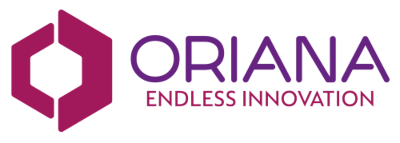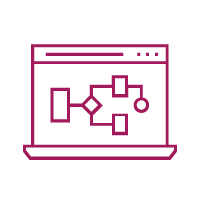Oriana has recently made waves by being recognized as one of only four vendors responsible for the creation of a new sector in low-code. According to John Rymer, Principal Analyst at research company Forrester, this emerging segment is for ‘Prescriptive’ low-code. The dictionary definition of prescriptive is: “Saying exactly what must happen, especially by giving an instruction or making a rule.” OK, so far, so good, but what does that mean for users, and should anyone be getting excited about it?
The short answer is ‘Yes.’ – Prescriptive low-coding brings changes that affect the way businesses utilize software, at a very fundamental level. Why? Because using software, apps and programs have become a lot easier, through platforms such as Oriana’s Low-Code Platform. Companies are always claiming their products and services are ‘easy to use’, but exactly how easy is easy in the case of low-code? Let’s put the Oriana offering under the microscope.
Easy does it
Easy comes from the fact that with the Oriana Low-Code Platform the building bricks of the platform are already supplied, with templates and application blocks readymade so that there is no need to start a project from scratch. This is part of the prescriptive approach designed to quickly guide users to the results they require. If the desired outcomes are so specialized that the building blocks are not completely suitable, then users with even minimal coding abilities can reconfigure and adapt the system to exactly customize it.
In practice however, the ever-expanding library of Oriana applications means that usually there’s an off-the-shelf solution awaiting users. These include back-office functions, Client Relationship Management, Customer Service Systems, Document Management, HR Management, Procurement Management, Mobile Workforce Support, Tender Management, and Project Administration.
In other words, a complete toolkit covering every aspect of business needs.
Boundaries can be stretched
Easy is also derived from the prescriptive approach of a structured User Interface which provides guidelines while being boundaried when building the UI. If the user has no need to change the way the template is set out, then they’re ready to rock! And if the boundaries do need to be changed, then that’s easy too. It’s prescriptive, but not constrictive.
Easy means the workflow basis provided by the widely accepted Business Process Model and Notation (BPMN) which underpins Oriana’s Low-Code Platform. Each discrete step in a workflow can be mapped out for a specific process, and behind each step is the XML code and database structure. Essentially this means that future changes to the workflow will automatically make changes for users at the application level so that their task sequences will also be changed. Automatic code generation is built into the workflow engine, creating the XML code needed, along with the necessary database model to store the data. Users don’t need to know what’s happening behind the scenes, only that their lives have become easier – and who will complain about that!
Easy is also available to anyone speaking SQL – Structured Query Language – who can therefore readily approach the minimal coding levels required to alter parameters within the Oriana. Low-Code Platform This means that the platform is brought within reach of a large audience who don’t have to be programming specialists to engage with it. Oriana offers a vast range of templates, ready to customize, so if anyone needs to tweak the system, they can do so easily and effectively. Citizen Developers can use the no-code Oriana Studio to lay out the schematic of a workflow, while anyone reasonably fluent in SQL can then ‘open the hood’ of the Oriana Low-Code Platform to really ‘tune the engine.’
Easy includes Robotic Process Automation too: UiPath – the leading RPA technology – coupled to Oriana’s Low-Code Platform means that repetitive and monotonous tasks previously done by operators can be replaced by a ‘robot’. By first mapping a process, then digitizing it and applying RPA to the process steps which would benefit, companies can track performance, collect data, and optimize workflows to increase efficiencies.
So easy actually means easy?
Putting a prescriptive low-code platform such as Oriana’s Low-Code Platform under the microscope reveals a whole ecosystem that functions to make the user experience simple and easy. There’s huge flexibility built in, but the platform also allows rapid engagement with the real world users in a business, without them needing any coding experience. The step-by-step, building block approach is intuitive and logical, and the huge library of existing applications means that very likely there are readymade templates for most users. Build the blocks the way they want to use them, knock them down, start again…Oriana allows people to ‘play’, but in a prescriptive way, within elastic boundaries.
And when everything is singing, in the right place, and performing exactly to requirements, then cement the Oriana blocks in place, for a streamlined, effective workflow. Easy!



